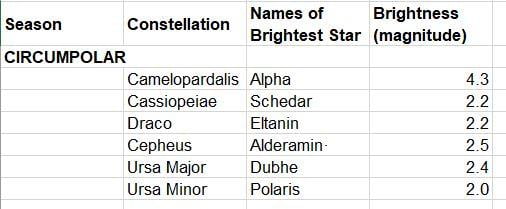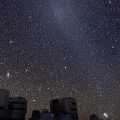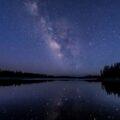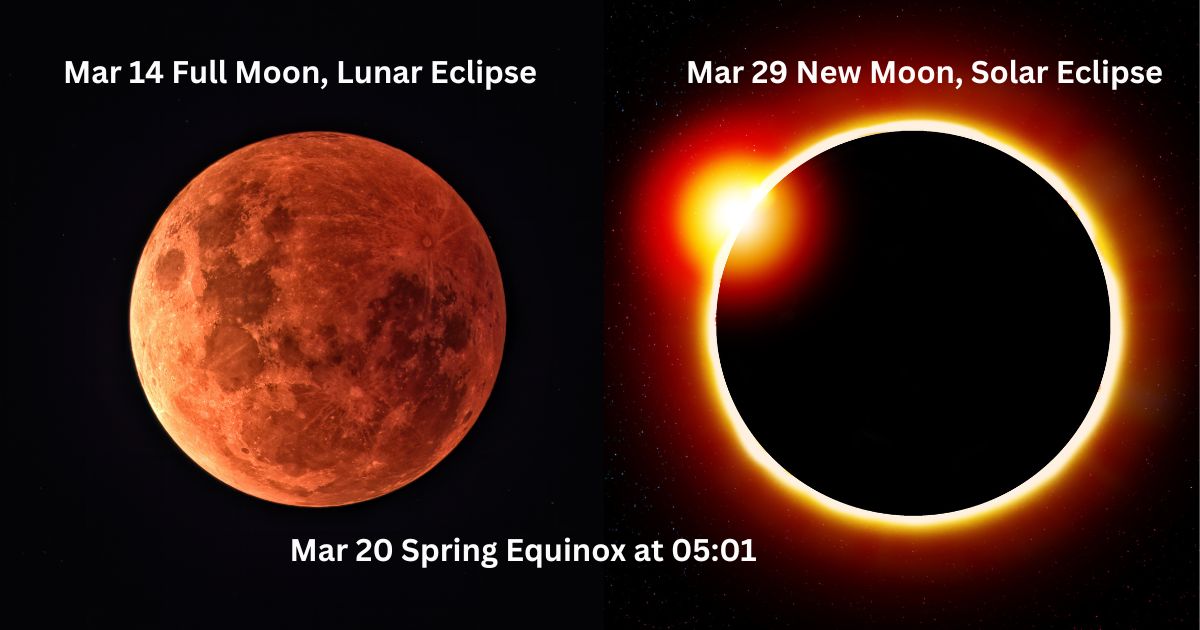For guidance on reading the tables for beginners – please go here
The month of February begins with a moonless evening, which will help identifying some of the fainter constellations. Although deep into winter, the major autumn constellation of Pegasus the winged horse is still visible above the western horizon. Its most identifiable asterism is a large square composed of average-brightness stars. After dinner the square is “standing” on its southwest corner. Directly above it and 35 degrees to the right of Jupiter is the hazy patch of the Andromeda Galaxy.
On the evening of the 15th, the 44% sunlit Moon can be used to locate the planet Uranus. It is only 2.5 degrees south of it and will appear as the brightest “star” in the field of view of binoculars.
NOTABLE EVENTS
Feb 2 Last Quarter Moon 18:18
Feb 9 New Moon 17:59
Feb 15 First Quarter Moon 10:01
Feb 16 Sun enters Aquarius
Feb 24 Full Moon 07:30

Dates for the Phases of the Moon

Entries are in Eastern Time and only require time zone correction. Do not use the correction from the “Ottawa-Time” table. Saskatchewan and parts of BC and Ontario do not use daylight savings. In these regions, subtract 1-hour from these times from March 10 to November 3.
FEBRUARY 24 – THE SECOND FULL MOON OF THE YEAR IS THE BEAR MOON
The full moon will reach its peak at 7:30 a.m. EST. The name Bear Moon is learned from the teachings of the 13 Grandmother Moons and the Ontario Native Literacy Coalition, and the naming of the moons also has a cultural teaching that explains the cycle of life and nature within the Indigenous cultures of Turtle Island. (February‘s full moon is also known as the Snow Moon, because, well, there’s lots of snow around.)
This full Bear Moon is certainly something to celebrate because it marks the time of year that bears (black bears specifically) are giving birth to their cubs. In late fall, female black bears look for a spot to hibernate, usually under a tree stump, and make their den cozy by lining it with grass, twigs and leaves. It is this time of the year (January to February) that the bears give birth to one or two cubs who will stay in the den with her nursing while she continues her sleepy hibernation. When the momma bear and her cubs emerge in April or May, the cubs can open their eyes and have grown to weigh around five pounds each. The cubs will stay with their mother for a full year as they learn and grow.
Planetary Configurations
When at Opposition, planets will appear on the opposite side of the sky from the Sun – very roughly on the meridian at midnight. Conjunctions are when the planet has the same “longitude” as the Sun. A Superior Conjunction is when the planet is on the other side of the Sun, and an Inferior Conjunction is when it is between the Earth and the Sun. Only Mercury and Venus can be at Inferior Conjunction. Maximum elongation is when Mercury and Venus appear farthest from the Sun in our sky. This occurs either in our morning eastern sky (mor.) or our western evening sky (eve.). Do not apply the Ottawa-correction times to the times in this table.

Prominent Constellations by Seasons


Brightest Stars

One of Canada’s foremost writers and educators on astronomical topics, the Almanac has benefited from Robert’s expertise since its inception. Robert is passionate about reducing light pollution and promoting science literacy. He has been an astronomy instructor for our astronauts and he ensures that our section on sunrise and sunset, stargazing, and celestial events is so detailed and extensive it is almost like its own almanac.













